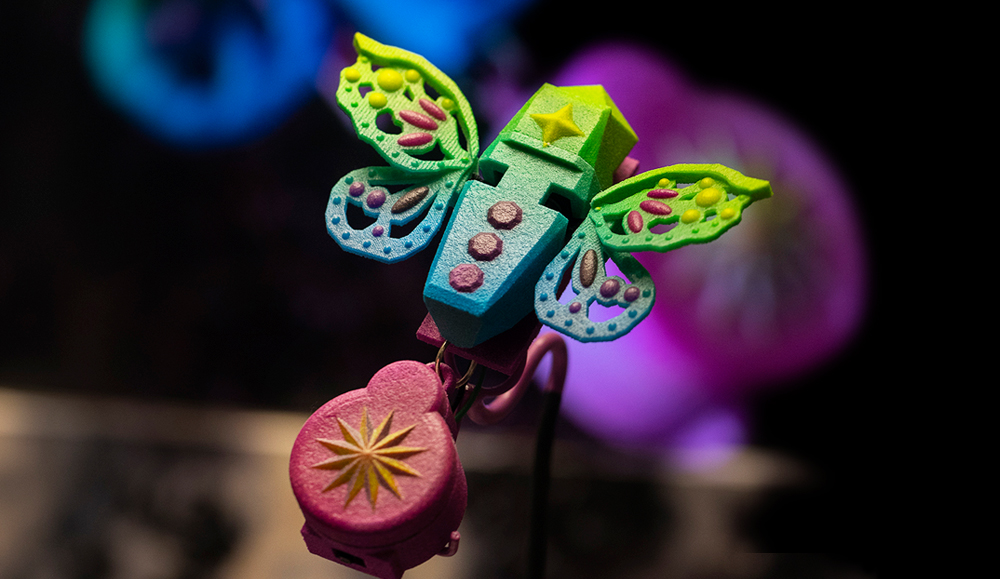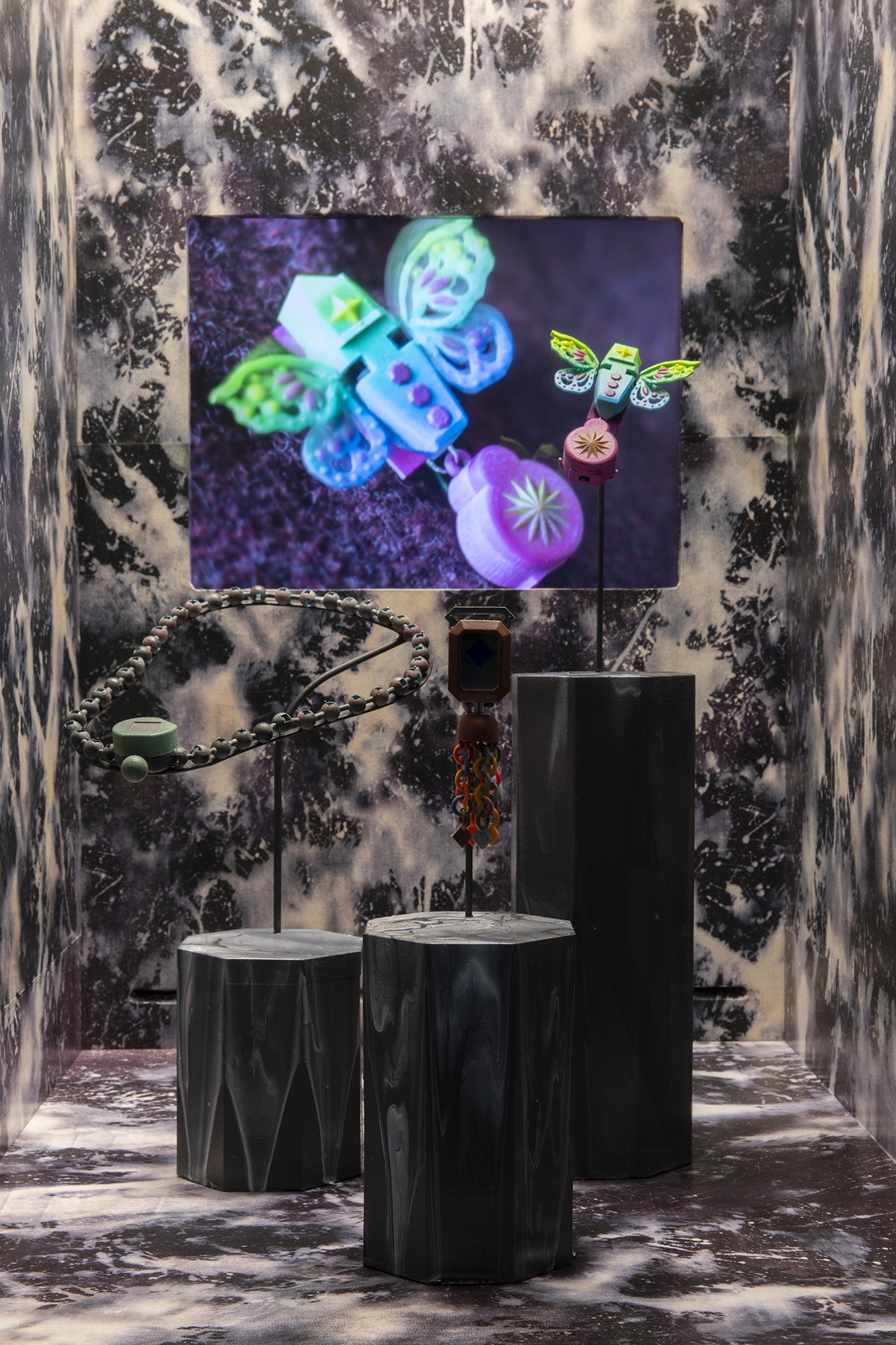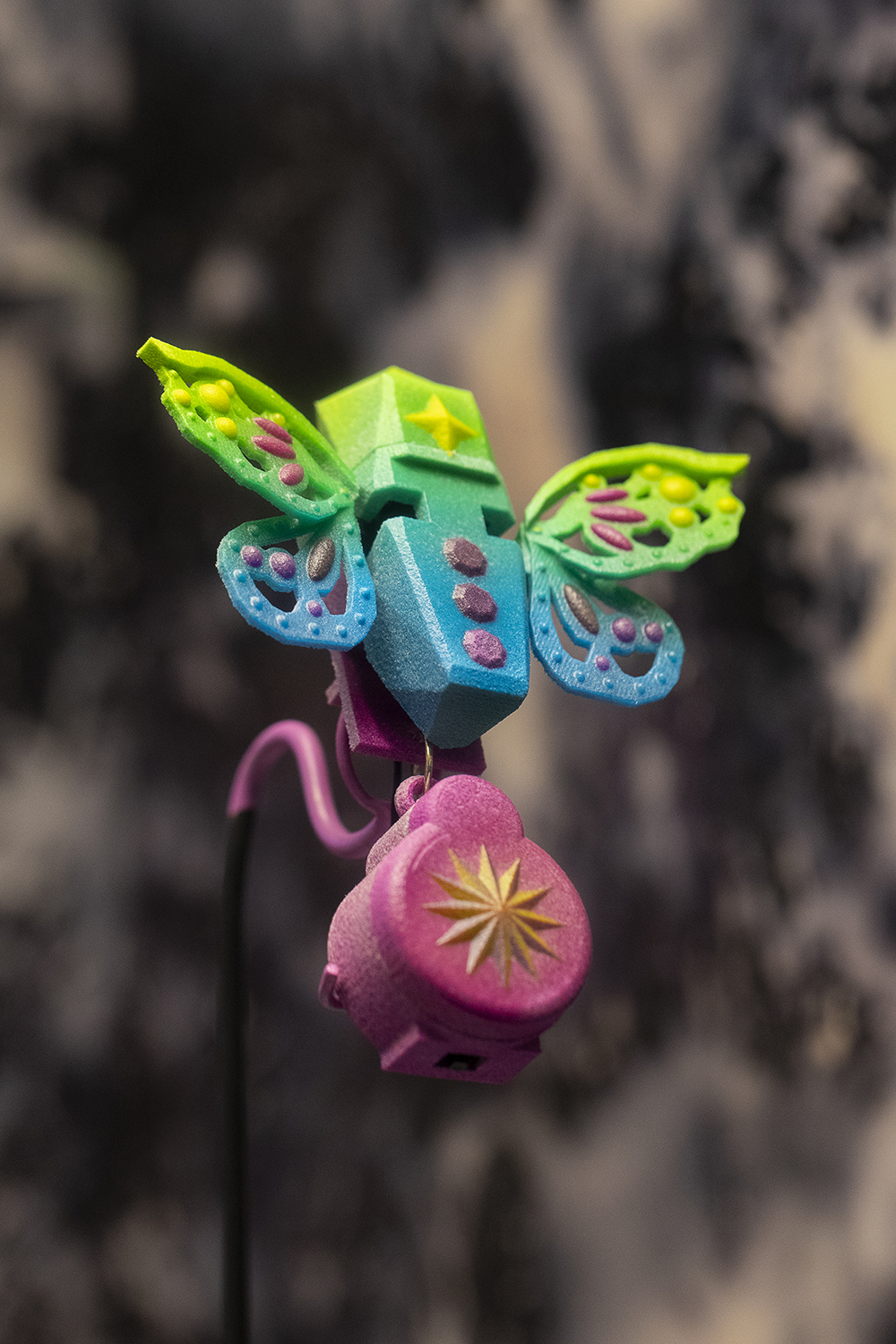Kinetic Adornments
Company: HP Labs (2018 - 2019)Team: Jiwon Jun, Alex Ju, Andrew E Fitzhugh
My Role: Research, 3D Design & Modeling, Fabrication of the Butterfly Brooch, User Study Planning
Exhibition: “Non-Stick Nostalgia: Y2K Retrofuturism in Contemporary Jewelry Exhibition at the Museum of Arts and Design, New York
Demonstration: RISE conference 2017

Color 3D-printed butterfly brooch (Photo Credit:
Jenna Bascom)
Kinetic Adornments is an exploratory research project investigating alternative aesthetics and interactions of wearables that might be enabled by 3D-printing in near future. As 3D printing offers new ways to fabricate and customize body-worn objects, we aimed to explore a possible application of HP’s Multi Jet Fusion (MJF) 3D printing technologies in that space. For the research, we interviewed people wearing jewelry on a daily basis and demonstrated to them a set of 3D-printed kinetic wearable prototypes we designed as probes for asking questions about the potential function as wearable devices without revealing any information about it.
The prototypes were exhibited at the Non-Stick Nostalgia: Y2K Retrofuturism in Contemporary Jewelry Exhibition at the Museum of Arts and Design in New York.
Background

Jewelry has a long history as one form of body adornments that allows a wearer to express identity and personality. From a wedding ring to a statement necklace, jewelry carries various meanings based on its form and material and it supports wearer's emotional and aesthetic needs. Observing that a wearable device is one type of body-worn object that could be understood as jewelry in social interactions, we took it as a reference for alternative forms and interactions of 3D-printed wearable devices.
User Study
In the research, we conducted in-depth interviews with nine individuals from diverse backgrounds, about their relationship with their favorite non-metal jewelry. We specifically indicated non-metal jewelry. In a previous study, where we interviewed jewelry wearables more generally, participants mostly brought in simple, sentimental metal jewelry they had received as gifts, but given we were working with plastic 3D printing we wanted to focus on the non-metal domain. We were more interested in what individuals choose for themselves, as part of their self-expression.
The participants were asked to bring their favorite non-metal jewelry in the interview, and we asked them questions about it to build an understanding of their relationship with that jewelry and motivations to wear it. Then, the prototypes exhibited here, which are created with 3D printed parts from MJF color test bed and electronics were presented to them.
The butterfly brooch prototype made with 3D-printed parts and electronics.
It flaps its wings when turned on.
Without revealing that these pieces are 3D-printed, we guided a conversation around potentially augmenting their existing jewelry or customizing new wearables like these. We asked them the first impressions of it and also to imagine if their jewelry could move in ways similar to how our prototypes move. What would they want the movement to mean? Would they still consider it jewelry? How would the relationship differ?
We deliberately chose to design these pieces to encompass a range of different forms and visual styles, increasing the chances that a participant might feel a connection with one of them. The necklace with a rotating ball and blue chains is meant to be subtle and neutral, while the spinning pendant is designed to be more playful in addition to the butterfly brooch demonstrating vibrant characteristics with flapping wings.
The kinetic elements are applied to the prototypes to provoke participants’ imagination on its potential function during the interview. We were also inspired by contemporary art jewelers like Vernon Reed who incorporated electronics into jewelry in the 80s and 90s. Although most of the hype has come from the wearable technology side to miniaturize device and make it look casual on the human body, we strongly wanted to craft not only futuristic, but also meaningful, personal, and fun pieces with 3D-printing.
Exhibition
This work was exhibited at “Non-Stick Nostalgia: Y2K Retrofuturism in Contemporary Jewelry Exhibition (2019),” Museum of Arts and Design in New York.


Photo Credit: Jenna Bascom
Live Demo
Mirjana Spasojevic (former head of Immersive Experiences Lab, HP) at RISE 2017 conference